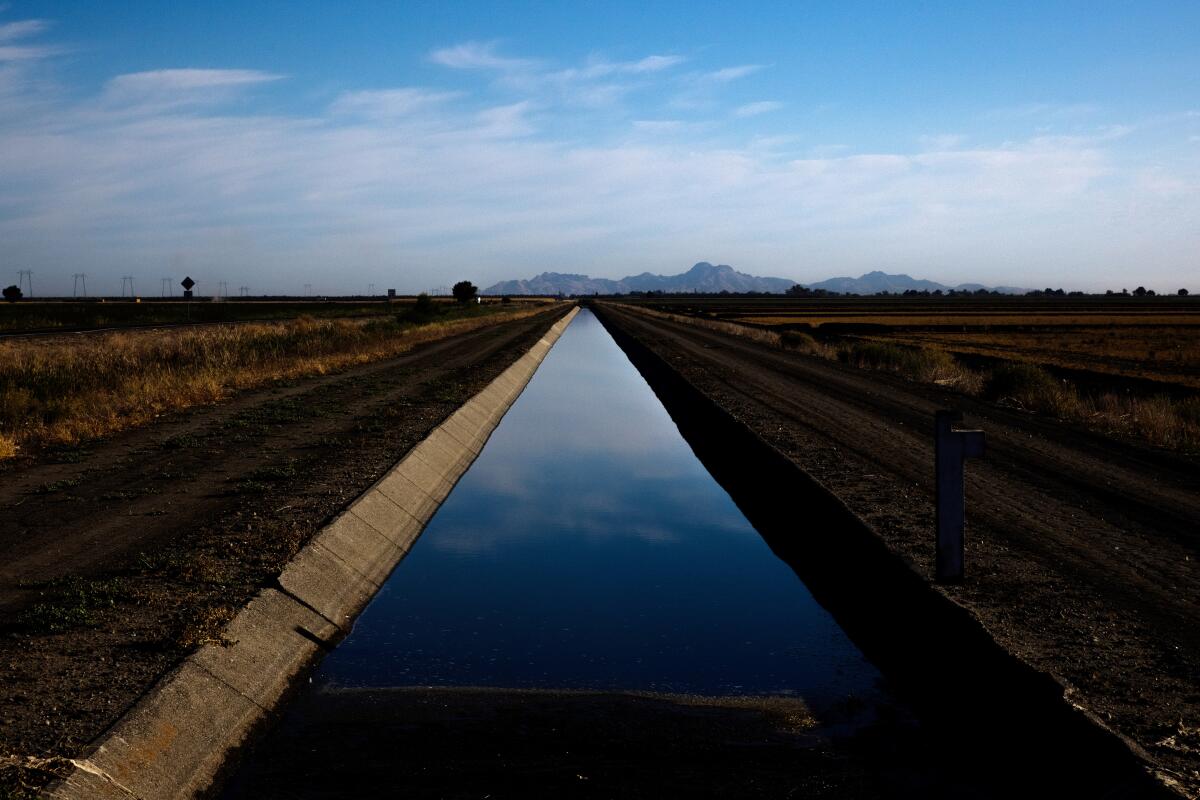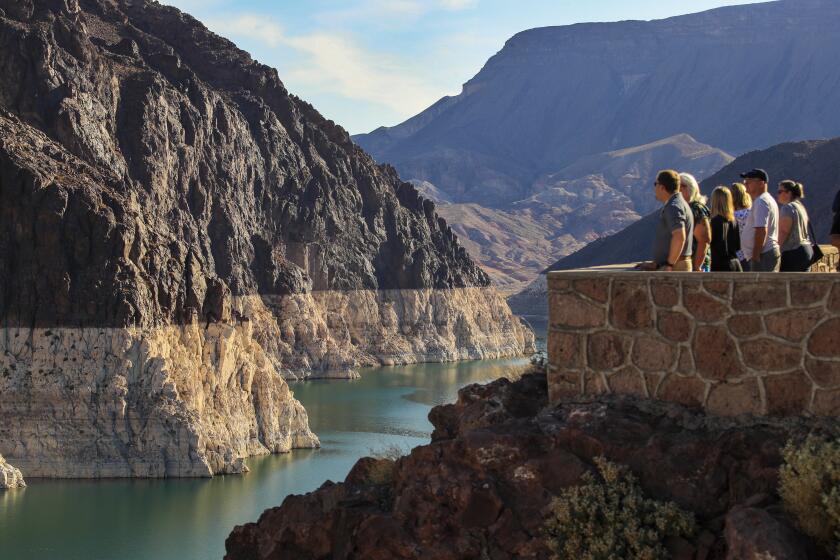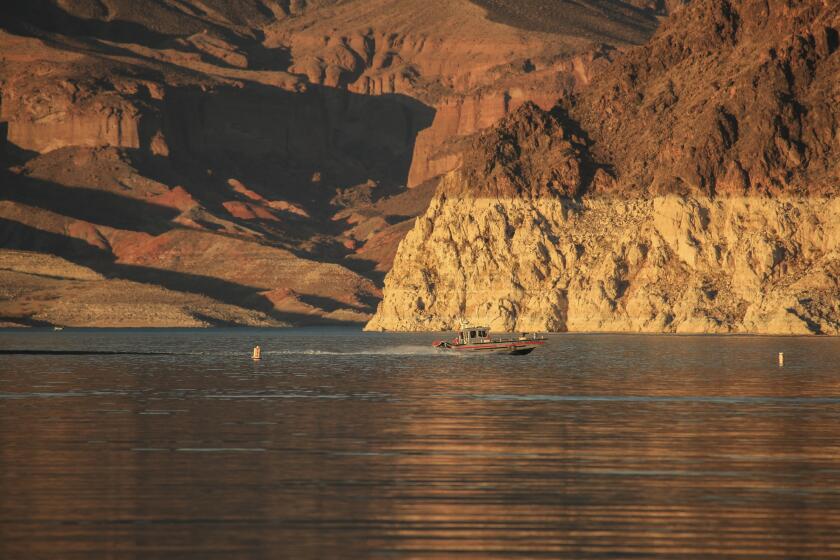Opinion: This idea could save California billions of gallons of water while generating clean energy

In 2021, our team at UC Merced found that covering California’s extensive network of irrigation canals with solar panels could make significant contributions to both clean energy and water conservation, serving two of the state’s most pressing needs at once.
In addition to the added solar power, we found that shading all 4,000 miles of the state’s canals and aqueducts could save as much as 63 billion gallons of water annually by reducing evaporation — enough to irrigate 50,000 acres of farmland or provide water to the homes of more than 2 million people.
Now we have a chance to put those projections to the test. Last year, we joined the California Department of Water Resources, the San Joaquin Valley’s Turlock Irrigation District and the firm Solar AquaGrid to build the nation’s first such project and assess the feasibility of covering canals across the state. The pilot, known as Project Nexus, is being funded by the state and is expected to be up and running over two canal sections spanning about 1.6 miles as of next year.
California’s water supply has become too low to continue irrigating extremely thirsty landscaping at malls, office parks and other places that exist only for looks, not for recreation or other use.
Such solar canopies have been suggested for years in the United States to no avail. The California Department of Water Resources and the Federal Bureau of Reclamation found that previous designs would hinder normal canal maintenance and operation.
Until now, the chief examples were steel-truss systems in India that, while appropriate for infrastructure there, could not readily be adapted to California’s major canals. It’s only recently that we’ve identified lighter-weight, less expensive and more flexible cable suspension designs that we think will work across California and the western United States.

More promising technologies are emerging and in need of testing. With $25 million in funding for the idea included in the Inflation Reduction Act, the Bureau of Reclamation has an opportunity to reconsider its original assessment in light of new technologies.
One challenge facing this idea is that water resources in California and across the United States were developed piece by piece, not as an integrated system. And while the Turlock Irrigation District provides both water and electricity, the two resources are not combined in many other places.
For many canal owners and operators, adding electricity means additional responsibilities and costs alongside the longer-term benefits. Water districts working to maintain their infrastructure and capacity in a changing climate may not see generating renewable energy as a high priority. We hope Project Nexus will begin to address this issue.
Another challenge relates to measuring all the benefits of projects that allow existing utility corridors to do double and triple duty. For the Turlock district, for example, building solar over canals avoids repurposing productive agricultural or natural lands for energy production. An important part of our research is developing a cost analysis that considers all the economic, environmental and social benefits of the system.
An unusually wet winter and federal largesse helped create a short-term Colorado River accord and gave California time to prepare for the hammer drop in 2026.
Solar over federal canals and aqueducts could likewise help the Bureau of Reclamation meet targets for renewable energy development on public lands, reducing pressure on sensitive ecosystems, wildlife habitat and other valuable assets.
Accelerating these projects will require more investment in prototypes to evaluate additional designs, including floating solar over moving water. State and federal policymakers will also have to do more to encourage water districts to engage in the transition to clean energy. The Turlock Irrigation District was motivated partly by California’s mandate to generate 60% of its power from renewable resources by 2030.
We have a collective opportunity to speed the transition from fossil fuels while making our vast water system more valuable and efficient, simultaneously advancing two of the most important goals we have. We urgently need more such systematic thinking and integrated responses to our changing climate reality.
Brandi McKuin is a project scientist with the Sierra Nevada Research Institute at UC Merced. Roger Bales is a distinguished professor of engineering and management at UC Merced.
More to Read
A cure for the common opinion
Get thought-provoking perspectives with our weekly newsletter.
You may occasionally receive promotional content from the Los Angeles Times.












